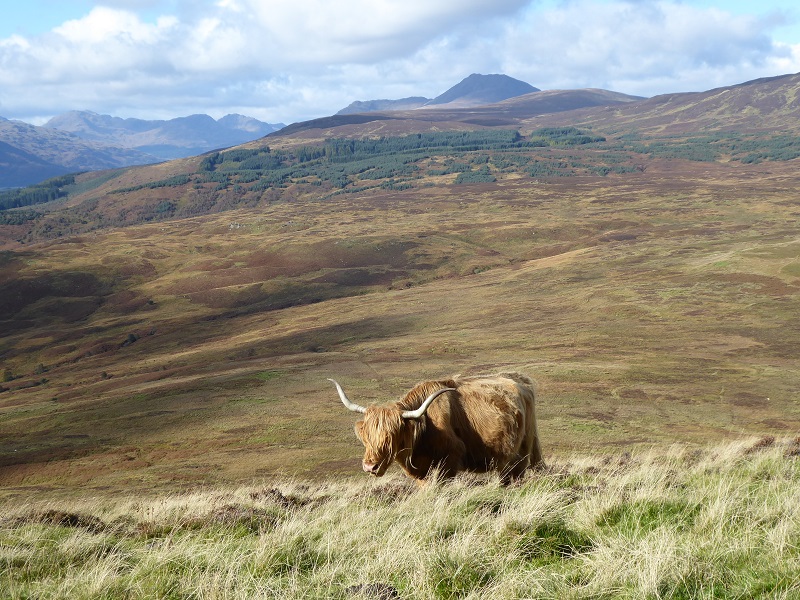
In January I blogged about the estate management plans the Loch Lomond and Trossachs National Park Authority has been developing with some landowners (see here) and which I had requested be made public last October. As a result of my appeal to the Information Commissioner, in July the LLTNPA “voluntarily” published some information on Integrated Land Management Plans on its website (see here). This included one ILMP for the Cashel Forest, which is run by the Royal Scottish Forestry Society, a voluntary organisation. The LLTNPA however failed to release voluntarily any plans they had agreed with private landowners and which they had claimed in their reports to the Scottish Government were a sign of progress. I believe that agreements which the LLTNPA, or any other public authority, make with landowners about land-use, should be in the public realm. My case with the Information Commissioner continues and should be decided shortly. Meantime, the information the LLTNPA did release shows why release of this information for private estates would be in the public interest.
Besides publication of the Cashel Land Management Plan the LLTNPA webpage provides:
- An explanation of what ILMPs are – why they couldn’t have done this 8 months earlier is a moot point but this is a step forward
- Links to the websites for two of the other estates that have ILMPs with the LLTNPA
- Links to the template forms that are used to draft a ILMP
The Cashel Estate Management Plan
The Cashel-Forest-ILMP is a very informative document, with a clear vision and objectives that support the statutory objectives of our National Park and with some positive proposals. It also appears that LLTNPA staff on the ground played a positive part in this with, for example, Kenny Auld, their Recreation and Access Adviser, advocating “that any development of the existing pathways would be hugely beneficial to the area” and helping to develop a proposal for a new path and making other paths more accessible for people with disabilities.
At the same time the Plan casts an interesting light on the conservation challenges in the National Park faced by conservation organisations:
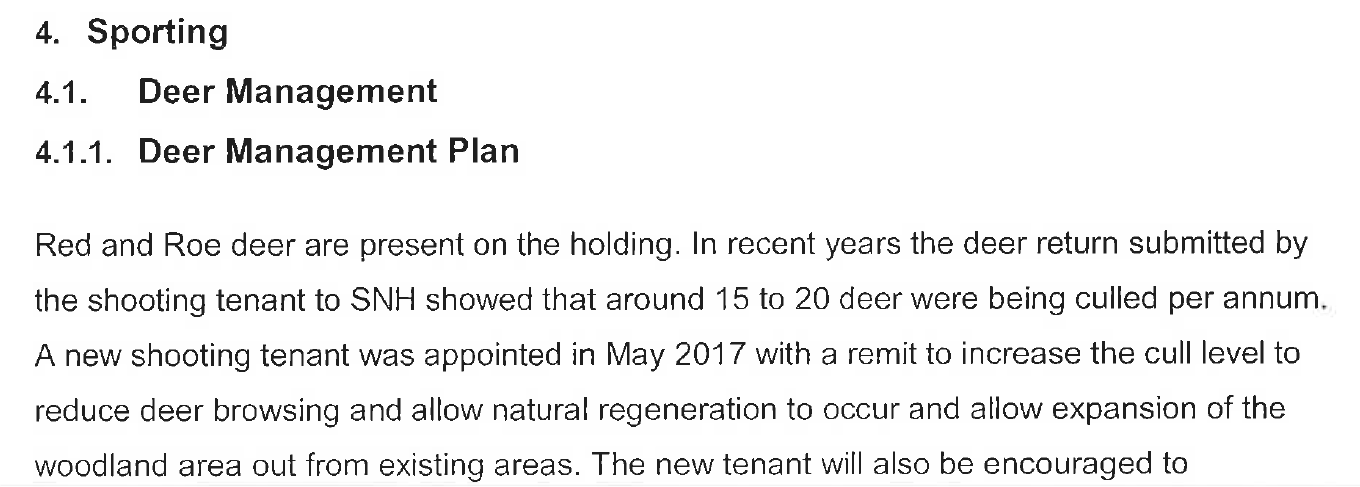
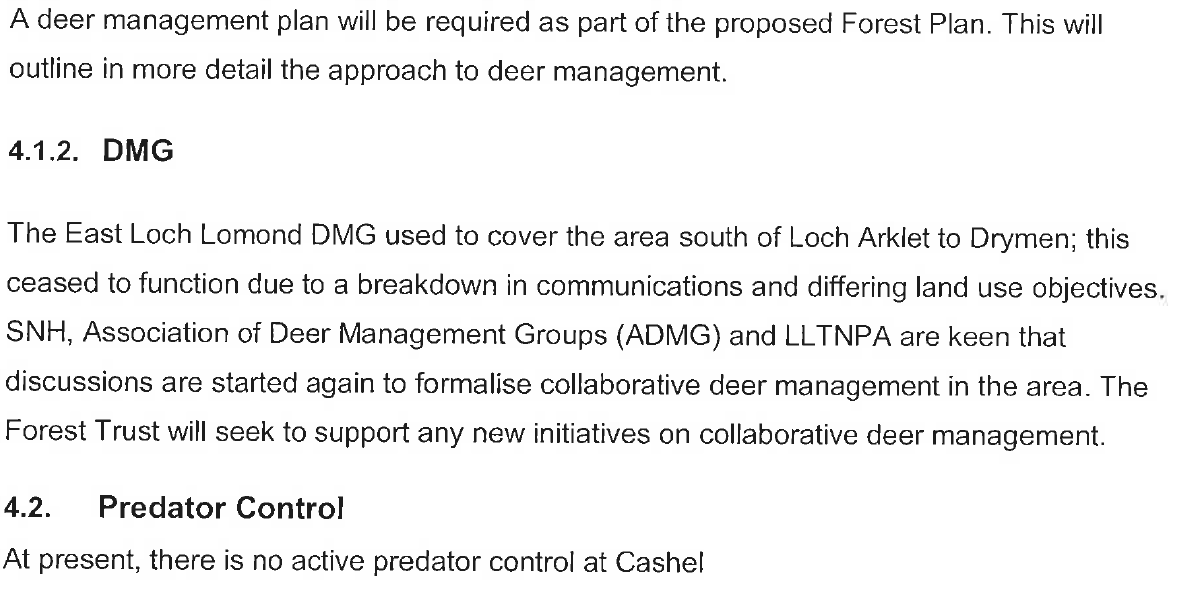 Here is a voluntary organisation that is wanting to increase woodland through natural regeneration – earlier in the plan it states that they have appointed a new shooting tenant who has been set a higher objective in terms of numbers of deer to be shot. The plan suggests that its strictly limited in what it can do because private landowners are not playing their part to control deer numbers and have “differing land-use objectives”. There would appear little chance in these circumstances of the new woodland planting extending through natural regeneration over the land around. So, what is the LLTNPA doing about this? Unlike the CNPA, which openly discusses deer numbers – even if its not yet come up with any Park-wide solutions – the LLTNPA has been completely silent on this issue. This matters. We need our National Parks to be making the case for control of herbivores if conservation is to have any chance of success and both their Boards should be considering this regularly.
Here is a voluntary organisation that is wanting to increase woodland through natural regeneration – earlier in the plan it states that they have appointed a new shooting tenant who has been set a higher objective in terms of numbers of deer to be shot. The plan suggests that its strictly limited in what it can do because private landowners are not playing their part to control deer numbers and have “differing land-use objectives”. There would appear little chance in these circumstances of the new woodland planting extending through natural regeneration over the land around. So, what is the LLTNPA doing about this? Unlike the CNPA, which openly discusses deer numbers – even if its not yet come up with any Park-wide solutions – the LLTNPA has been completely silent on this issue. This matters. We need our National Parks to be making the case for control of herbivores if conservation is to have any chance of success and both their Boards should be considering this regularly.
The sentence on predator control gives an indication of why the LLTNPA might not want to publish other estate management plans. Is it really agreeing plans with private estates on the numbers of fox, stoats or corvids which should be eradicated?
Besides being an examplary plan, the RSFG plan for Cashel shows just why other plans the LLTNPA has agreed with private landowners should be public. It will be interesting to see how the LLTNPA is trying to justify to the Information Commissioner why plans for conservation organisations can be made public but those for private landowners should be kept secret.
What the estate websites tell us
Instead of providing plans for the 4 ILMPs which have been agreed with private estates, the LLTNPA provides links to two of their websites. That for Portnellan (see here), an organic farm near Gartocharn on south shore of Loch Lomond, does say a little about how the land is being managed at present (hedge renewal) and does celebrate the stoats and weasels on their land. However, it mainly functions as a tourist site (they offer accommodation and various boating activities) and does not say what might happen in future. Its not a substitute for a plan. Maybe that doesn’t matter, the land looks as if its being well managed at present but it would be interesting to know if the LLTNPA had agreed any changes in direction with the landowners – and if so, why does this need to be kept secret?
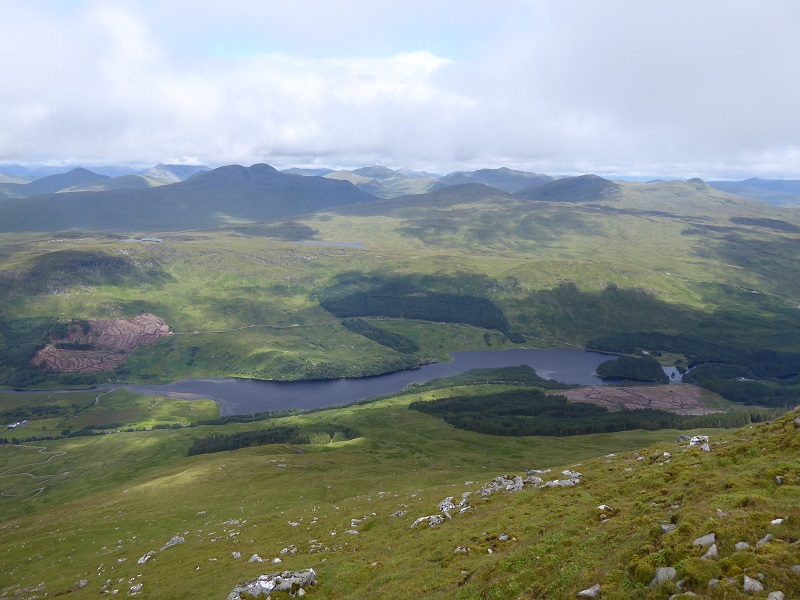
The website for Lochdochart (see here), provides serious cause for concern about how the estate are managing the land and how this fits with the LLTNPA’s statutory objectives.
The website shows photos of typical industrial forestry and industrial forest management practices http://lochdochart.co.uk/timber.html. which have adverse consequences for the natural environment, from acidification of soils to wildlife, and also have had a massive on the landscape. (The forest track which leads to the felled area in the photo is old and has scarred the landscape in Glen Dochart for years). These are issues which one would expect the LLTNPA to be addressing when its drawing up management plans with estates so why is the LLTNPA so reluctant to make information about what it might be doing about this public? I suspect the answer is its doing not a lot.
The Lochdochart information on deer management is full the usual spin “Red and Roe Deer roam Lochdochart as their ancestors have done since time immemorial. Whilst they can be very destructive if they get into a young plantation, they are an important part of our ecosystem and we manage them in a balanced and sustainable way. We are members of the Breadalbane Deer Management Group and any necessary culling is carried out by a trained and competant individual.” This tells us nothing about what agreements if any have been made about deer numbers and whether the LLTNPA believes numbers of deer on the estate are “sustainable” or not.
And then there is the section on access:
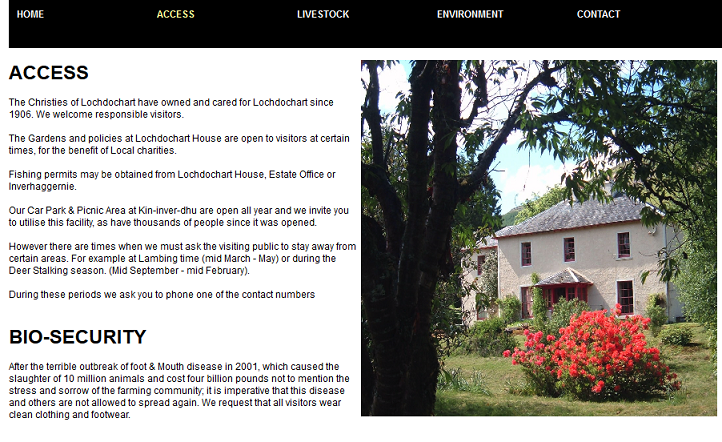
It is of course positive that the estate is providing a car park, though given the levels of public subsidy estates have received over the years the public should expect no less, but the other comments on access are in my view contrary to access rights and the LLTNPA should have told the estate they needed to be changed:
“there are times when we must ask the visiting public to stay away from certain areas. For example at Lambing time (mid March – May) or during the Deer Stalking season. (Mid September – mid February).”
This effectively is an attempt to deter people from exercising their access rights because it creates complete uncertainty about where people might be able to go for every month of the year except June, July and August. There is no information provided on what areas the estate is asking people to stay away from or or how to find out more if you are visiting. In fact, what the Scottish Outdoor Access Code says is that any requests to avoid areas when deer stalking or other estate management activities are taking place should be specific to time and place. The areas where lambing takes place will be tiny. Indeed the LLTNPA itself has a notice it issues to landowners about lambing which simply asks people to keep dogs out of specific fields at lambing times:
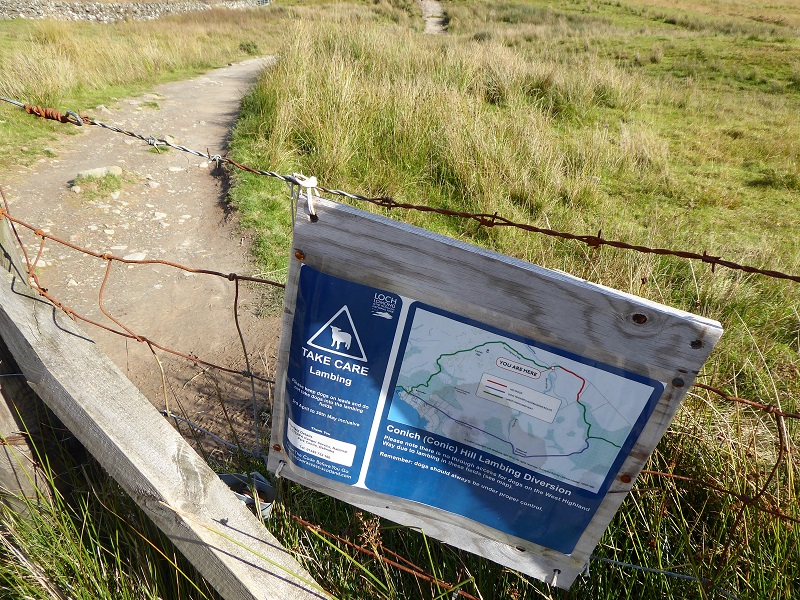
So, why has the LLTNPA not ensured the Loch Dochart estate takes a similar approach?
And that the estate is still going on about Foot and Mouth, where access restrictions caused terrible damage to the rural economy, 17 years later beggars belief. It was the failure of estates to lift restrictions from Foot and Mouth more than any other single factor which persuaded the Scottish Parliament of the need to enshrine access rights in legislation. I appreciate that the estate has a breeding programme but the risk the public poses to this is minimal. Agricultural diseases are basically transmitted across the country by agricultural vehicles, transportation of animals and people working in the farming industry, not the public. The impression the website gives is that this is an estate that will use the slightest excuse to try and exclude the public.
Its worth noting too there is nothing on the estate website about the Allt Essan hydro scheme which lies on the estate and which has a significant impact on the landscape (see here) :
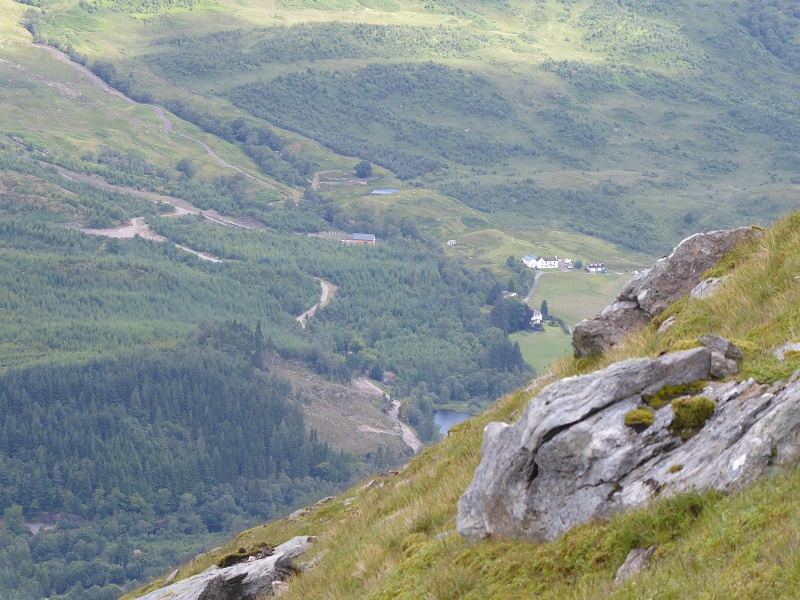
It would be interesting to know if any of the significant income the estate will derive from this scheme, all paid for by the public in their fuel bills, will be used for conservation purposes.
The LLTNPA’s estate management plan template
At least my appeal so far has had the effect of persuading the LLTNPA to release voluntarily the template which they are using to develop estate management plans ILMP-Template-layout_draft. While this does include some information which could be classed as commercially confidential, a large proportion of the information appears to be about land-use while some of the information about money is about use of public funds which again I think should be in the public realm. It will be interesting to see what the Information Commissioner decides.
The wider issue is that both our National Parks should in my view be able to demonstrate that whatever they are discussing and agreeing with landowners is in the public interest and in accordance with their statutory objectives. That requires openness, not secrecy.
Meantime, I will report the access information on the Glen Dochart website to the LLTNPA as an access problem.
Another brilliant piece Nick. Well done and thank you.